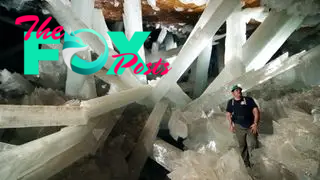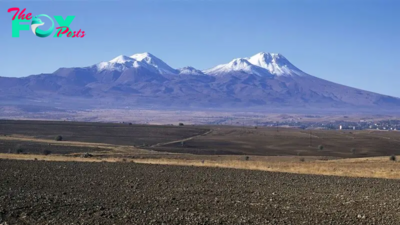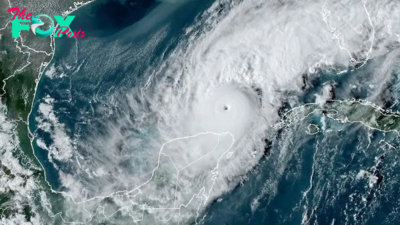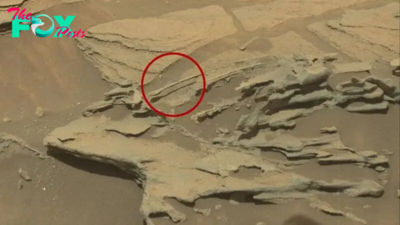Science
Cave of Crystals: The deadly cavern in Mexico dubbed 'the Sistine Chapel of crystals'
Name: Cave of Crystals
Location: Chihuahua, Mexico
Coordinates: 27.850823490019174, -105.4963675458159
The Cave of Crystals is an underground cavern filled with tree-size gypsum crystals, including some of the largest natural crystals ever found. The cave is located around 980 feet (300 meters) deep and is connected to a lead, zinc and silver mine in Naica, 65 miles (105 kilometers) southeast of Chihuahua City. The mine was flooded almost 10 years ago after workers accidentally broke into an aquifer, but the Cave of Crystals sits higher in the ground, meaning the water didn't reach it.
Miners discovered the Cave of Crystals by chance in 2000 while drilling a side tunnel to help ventilation in the mine. When they stepped inside, they discovered a chamber packed with enormous, milky-white crystals — the largest measuring over 37 feet (11 meters) long and 3.3 feet (1 m) wide. The crystals are made of selenite gypsum, a sulfate mineral that forms from salts dissolved in groundwater. It is so soft you can scratch it with a fingernail.
Related: Water leaking into Earth's core may have birthed a Mysterious layer that churns out crystals
Mining operations in Naica began in 1974, and several crystal-filled caves have since been discovered — including the Cave of Swords, which is studded from floor to ceiling with dagger-like crystals. But the Cave of Crystals is by far the biggest, stretching 360 feet (110 m) across with a maximum volume of 210,000 cubic feet (6,000 cubic meters) — more than twice the size of an Olympic swimming pool. The cave is shaped like a horseshoe and carved out of limestone rock.
"It's the Sistine Chapel of crystals," Juan Manuel García-Ruiz, a geologist with the Spanish National Research Council (CSIC) and at the University of Granada in Spain, who has studied the cave, told National Geographic in 2007.

The cave sits on a fault line and above a magma reservoir buried 2 to 3 miles (3 to 5 km) beneath Naica. Roughly 26 million years ago, magma rose from this chamber, forcing mineral-rich waters upward through cracks in the rock. The scalding water opened caverns in the limestone and formed deposits that crystallized over thousands of years as it slowly cooled. Temperatures later stabilized at around 136 degrees Fahrenheit (58 degrees Celsius), creating ideal conditions for gypsum crystals to grow to mammoth proportions from a mineral called anhydrite.
—Hidden chunk of Earth's crust that seeded birth of 'Scandinavia' discovered through ancient river crystals
—Scientists just made the largest quasicrystal ever — because one of them bet it couldn't be done
—Never-before-seen 'crystal-like matter' hidden in a chunk of fossilized lightning is probably a brand new mineral
The conditions in the cave are just right for crystals, but they are deadly to humans. Temperatures stayed the same after the water drained but humidity reached over 90%. At that humidity level, sweating has no cooling effect on the body. As a result, people need proper protection to stay in the cave for longer than 10 minutes. Walking among the crystals is also dangerous, because the beams are slick and with condensation and extremely slippery.
-

 Science1w ago
Science1w agoYou Won’t Want to Miss October’s Rare Comet Sighting. Here’s How and When You Can See It
-

 Science3w ago
Science3w agoA New Spacecraft Could Help Determine if There’s Life on a Moon of Jupiter
-

 Science3w ago
Science3w agoWe Can Thank Deep-Space Asteroids for Helping Start Life on Earth
-

 Science3w ago
Science3w agoStranded Astronauts Set to Come Home After SpaceX Capsule With Extra Seats Reaches ISS
-

 Science3w ago
Science3w ago'Every volcano has its own personality': Mystery Mount Adams earthquake surge under investigation
-

 Science3w ago
Science3w agoEarth's crust may be building mountains by dripping into the mantle
-

 Science3w ago
Science3w agoHow strong can hurricanes get?
-

 Science3w ago
Science3w ago32 things on Mars that look like they shouldn't be there



























